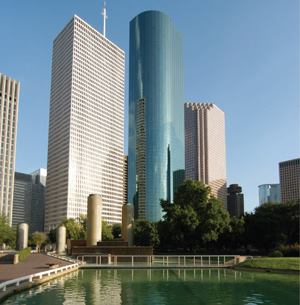Methodist Willowbrook hospital is also underway on a $250 million expansion that will make it the largest medical facility in the Cy-Fair/Tomball market of northwest Houston. In response, Trammell Crow is building Wynhaven at Grant, a 372-unit complex on Grant Road; Davis Development is constructing Villas at Huffmeister, a 250-unit complex located at Huffmeister and Cypress North Houston Road; and farther to the west, Alliance Residential is planning the 312-unit Broadstone Cypress, on Highway 290 at Mueschke Road.
In early 2007, Medistar Corp. joined the game, breaking ground on St. Luke’s Sugar Land Hospital and Medical Plaza, located in the southwest portion of metro Houston. Nearby, Cranbrook Development, in conjunction with Greystone, is building a 312-unit property named Silverbrooke, which is located on Brand Lane in Stafford; and Houston-based Judwin Properties is developing Brazos Ranch, a 670-unit, two-phase complex. Situated within the mixed-use Brazos Town Center, the high-end Brazos Ranch apartments range in size from 574 square feet to 1,582 square feet with rents from about $700 to $1,400 per month.
MORE POSITIVE ENERGY In Texas’ Energy Corridor west of down-town, two new hospital facilities are further bolstering multifamily development in the “Energy Capital of the World.” Here, Texas Children’s Hospital is building a $220 million pediatric project, and the Methodist Hospital System is building a new $300 million hospital. In preparation for these facilities, Houston-based HFI is developing The Lancaster apartments, a 252-unit complex on Park Row with one-, two-, and three-bedroom plans and rents ranging from $600 to $800 per month.
Newport on the Lake also is being developed by Cambridge Development and will have approximately 234 units located on Barker Cypress and ranging from 727 square feet to 1,450 square feet.
While Houston continues to see a premium price being paid for future apartment developments, suburban markets do not garner the high rents common at properties inside the Loop. They do, however, have the competitive advantage of affordability, particularly as land and rent prices within the Loop continue to rise. Compared to downtown land prices, which average as much as $115 to $250 per square foot, suburban land can be secured for between $3.50 and $5.50 per square foot, depending on the submarket. Rents also reflect geography, with downtown apartments averaging $1.35 to $1.75 per square foot and downtown condos securing approximately $2.00 per square foot, as compared to midtown rents of an average $1.10 to $1.20 per square foot and approximate suburban rents of 90 cents to $1.25 per square foot.
A PORT IN THE STORM Expansion of the Panama Canal and a reduction of services available at the Port of New Orleans have turned the Port of Houston into a golden child for the processing and distribution of waterborne goods. In turn, this has breathed new life into Houston’s southeast multifamily markets. To offset port facilities working beyond maximum capacity, the Port of Houston Authority is progressing with a $1.4 billion expansion that will deliver the new Bayport mega-terminal, creating about 12,000 jobs in its first 10 years and 30,000 jobs upon the project’s completion in 2030.
The port area—like much of Houston—houses mostly Class B and C properties, but the growing demand for nearby multifamily space among blue collar workers may go a long way toward inspiring local owners and investors to consider rehabilitation and repositioning. At present, however, buyers in this product type are struggling with deferred maintenance issues and, further shackled by credit constraints, are opting to walk away from such transactions.
Under this set of cycle fundamentals, buyers of Class C space across Houston must enter their deals with a vision to improve not only apartment communities but also neighborhoods. At the same time, they must evaluate a property on paper with a trained eye, particularly at a time when lenders are requiring 25 percent down payments (versus the 10 percent to 15 percent of past years) and sellers, in turn, are receiving 15 percent to 20 percent off of their listing price. On the seller side, expectations must become more realistic, as buyers are purchasing on actual and not pro forma numbers.
One thing that hasn’t changed is that buyers still come to—and buy in—Houston for an upside. And the city rarely disappoints. In fact, many owners are swimming in profits from the upside. For the investor who can pick well geographically and amenity-wise, this is certainly a great place to wait out the weather.
FAST FACTS
Considering Houston? Here’s what you need to know:
- Population: 2 million
- Occupancy: 87.4%
- Median Age: 33
- Median Household Income: $80,000
- Average Rent: $706
Unemployment: 4% NOTABLE: Houston is one of five cities in the United States with companies in all four disciplines of the performing arts—the Houston Ballet, Houston GrandOpera, Houston Symphony, and Alley Theatre. The Downtown Aquarium features 500,000 gallons of marine life, a live white tiger exhibit, several themed restaurants, a Ferris wheel, boardwalk, and dancing fountains. The Houston area also features 1.5 million acres of lakes and 80,000 miles of rivers and streams.
